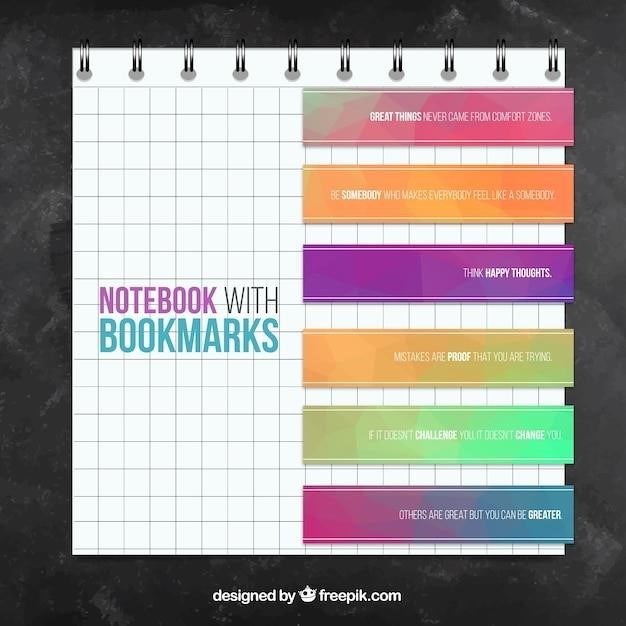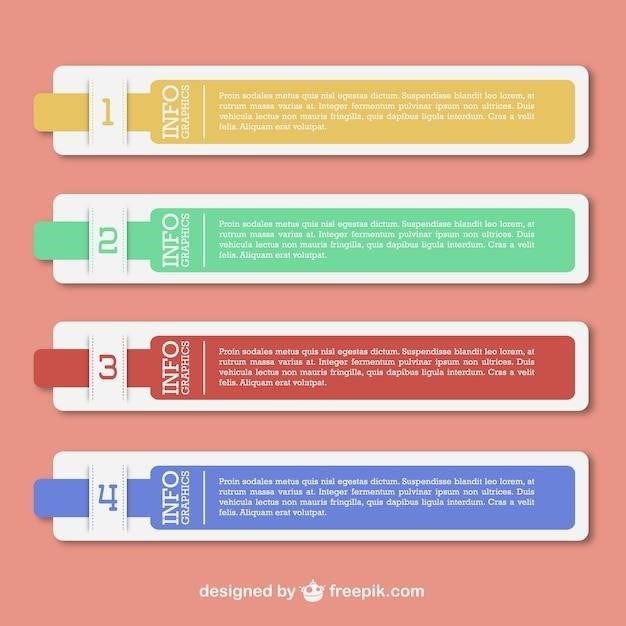reading guide strips
What are Reading Guide Strips?
Reading guide strips are assistive tools designed to aid individuals with reading difficulties, such as skipping words, lines, or letters, or losing their place in the text. They are typically transparent strips with a window that highlights a single line of text, helping readers focus their attention and improve their visual tracking.
Definition and Purpose
Reading guide strips are simple but effective tools that help individuals improve their reading skills by providing a visual focus point. These strips are typically made of transparent plastic or paper with a window that covers one line of text. The purpose of these strips is to guide the reader’s eyes along the lines of text, preventing them from skipping words, lines, or losing their place. They can be particularly beneficial for individuals with learning disabilities like dyslexia, visual impairments, emergent readers, and adults struggling with reading difficulties.
Types of Reading Guide Strips
Reading guide strips come in various forms to cater to different needs and preferences. Some common types include⁚
- Sentence strips⁚ These strips are designed to highlight a single sentence at a time, helping readers maintain focus and comprehension.
- Line guides⁚ These strips feature a narrow window that focuses on a single line of text, aiding in visual tracking and preventing eye strain.
- Color-coded strips⁚ These strips often use different colors to highlight specific parts of the text, such as nouns, verbs, or adjectives, which can be helpful for learners who struggle with visual discrimination.
- Adjustable strips⁚ These strips allow for customization of the window size and position, allowing users to adjust them based on their individual needs and reading materials.
Benefits of Using Reading Guide Strips
Reading guide strips offer numerous advantages for individuals struggling with reading challenges, leading to improved reading skills and overall fluency.
Improved Visual Tracking
Reading guide strips act as a visual aid, helping readers track their progress across the lines of text. By focusing attention on a single line at a time, they prevent the reader’s eyes from wandering off the page, reducing the likelihood of skipping words or lines. This controlled visual tracking improves reading accuracy and reduces the need to reread sentences or paragraphs.
Enhanced Concentration
Reading guide strips create a visual boundary, minimizing distractions from surrounding text and images. This focused visual field helps readers concentrate on the current line of text, reducing mental fatigue and improving comprehension. The limited scope of the window encourages readers to process information more deliberately, leading to deeper understanding and better retention of the material.
Reduced Reading Fatigue
Reading guide strips can significantly reduce eye strain and fatigue associated with reading, particularly for individuals with visual impairments or dyslexia. The clear window helps to focus the reader’s attention on the current line of text, preventing the eyes from constantly scanning back and forth across the page. This targeted focus minimizes eye movement, reducing strain and discomfort, making reading a more enjoyable experience.
Increased Reading Comprehension
Reading guide strips can enhance reading comprehension by promoting focused attention and reducing distractions. By isolating each line of text, the strip helps readers concentrate on the words being read, preventing them from skipping over or misinterpreting words. This concentrated focus allows for a deeper understanding of the text, as the reader can process each word and sentence more effectively. Furthermore, the visual aid provided by the strip can help readers with visual processing difficulties, leading to improved comprehension and overall reading fluency.

How to Use Reading Guide Strips
Using reading guide strips is simple and straightforward. The strip is placed over the text, with the clear window aligning with the line being read. As the reader progresses, the strip is moved down the page, keeping their eyes focused on the current line.
Placement and Movement
The reading guide strip is positioned at the top of the text, with the clear window covering the first line. As the reader moves their eyes along the line, the strip remains stationary. Once the first line is finished, the strip is smoothly slid down to the next line, maintaining a consistent pace with the reader’s progress. This controlled movement guides the eyes and prevents them from jumping ahead or backtracking, ensuring a focused and efficient reading experience.
Adjusting the Strip Size
The size of the reading guide strip can be adjusted to suit the reader’s needs and the format of the text. For shorter lines, a smaller strip may be more appropriate, while longer lines may require a wider strip. The width of the window can also be adjusted to accommodate different font sizes and line spacing. Some readers may prefer a wider window to highlight more text, while others may find a narrower window more helpful for maintaining focus.
Using with Different Text Formats
Reading guide strips can be used with a variety of text formats, including books, magazines, newspapers, and digital screens. For printed materials, the strip can be placed directly on the page, while for digital screens, a transparent overlay or a dedicated app can be used. The strip can also be customized to accommodate different font styles and sizes, as well as different line spacing. For example, a reader with dyslexia may benefit from a strip with a contrasting color or a wider window to help with word recognition.

Who Can Benefit from Reading Guide Strips
Reading guide strips can be beneficial for a wide range of individuals, including students with learning disabilities, individuals with visual impairments, emergent readers, and adults with reading difficulties.
Students with Learning Disabilities
Students with learning disabilities, such as dyslexia, often struggle with visual tracking and decoding skills. Reading guide strips can provide a visual anchor, helping them stay focused on the line of text and preventing them from skipping words or lines. The strips can also help to reduce eye strain and fatigue, making reading a more enjoyable experience for students with learning challenges. By providing a clear visual structure, reading guide strips can make reading more accessible and successful for students with learning disabilities.
Individuals with Visual Impairments
Individuals with visual impairments may find it challenging to maintain their place on a page, especially when reading small print. Reading guide strips, with their clear window and contrasting color, can provide a visual aid that makes it easier to track the text. The strips can also reduce glare, which can be a significant issue for people with light sensitivity. By enhancing visual clarity and reducing distractions, reading guide strips can make reading more comfortable and accessible for individuals with visual impairments.
Emergent Readers
For emergent readers, learning to track words from left to right and top to bottom is a crucial skill. Reading guide strips can be invaluable in this process. The clear window helps children focus on a single line of text, preventing them from getting lost in the page. As they move the strip along the lines, they develop a sense of directionality and learn to follow the flow of the words. This visual aid can also help them identify individual letters and words, promoting early literacy development.
Adults with Reading Difficulties
Reading difficulties can persist into adulthood, affecting comprehension, speed, and enjoyment of reading. Reading guide strips can provide a practical and discreet solution for adults struggling with these challenges. By focusing attention on one line at a time, these strips can help reduce eye strain and improve visual tracking, making reading less tiring and more efficient. Additionally, they can aid in overcoming specific difficulties like skipping words or lines, enhancing comprehension and confidence in reading.
Where to Find or Make Reading Guide Strips
Reading guide strips are readily available through commercial retailers, online platforms, and even DIY solutions.
Commercial Options
Several companies specialize in producing reading guide strips for various needs. These options often come in different sizes, colors, and materials, allowing users to choose the best fit for their preferences. Popular brands include Rainbow Resource Center, Elizabeth Richards, Ashley Productions, Inc., and Special Supplies. These companies offer a range of products, from simple transparent strips to more elaborate versions with color overlays or specific features designed for dyslexia or other reading challenges. They often provide detailed descriptions and customer reviews to help buyers make informed decisions.
DIY Solutions
For those seeking a budget-friendly and customizable approach, creating reading guide strips at home is a viable option. A simple and readily available material for this purpose is transparent plastic dividers, commonly found in office supply stores. By cutting these dividers into strips of desired length, you can create basic reading guides. Additionally, colorful transparency sheets or even cardstock can be used to create DIY reading strips. This method allows for personalization in terms of color, size, and design, catering to individual preferences and needs.
Printable Templates
The internet offers a wealth of free printable templates for reading guide strips, making it convenient for educators, parents, and individuals to access these tools without the need for physical materials. These templates often come in various designs, colors, and sizes, allowing for customization to suit specific reading needs. Websites like Teachers Pay Teachers and other educational resource platforms frequently provide printable reading guide strips, often with clear instructions and explanations for their use. This readily accessible option makes it easy to obtain and utilize reading guide strips without requiring any specialized skills or materials.
Reading guide strips offer a simple yet effective solution for individuals facing reading challenges, enabling them to improve their reading skills and confidence.
Key Takeaways
Reading guide strips are a valuable tool for individuals struggling with reading difficulties, providing several benefits⁚ improved visual tracking by focusing attention on a single line of text, enhanced concentration by minimizing distractions, reduced reading fatigue by easing eye strain, and increased reading comprehension by promoting a steady pace and preventing regressions. They can be customized to suit individual needs and preferences, making them a versatile and adaptable assistive tool for learners of all ages and abilities.
Future of Reading Guide Strips
As technology advances, reading guide strips are likely to evolve in exciting ways. Digital versions integrated into e-readers or tablets could offer personalized adjustments, including font size, color, and line spacing. Interactive features like audio feedback and progress tracking could enhance learning. Furthermore, the increasing focus on personalized learning and assistive technology suggests that reading guide strips will continue to play a significant role in supporting individuals with reading challenges, ensuring a more inclusive and accessible learning experience for all.

Leave a Reply
You must be logged in to post a comment.